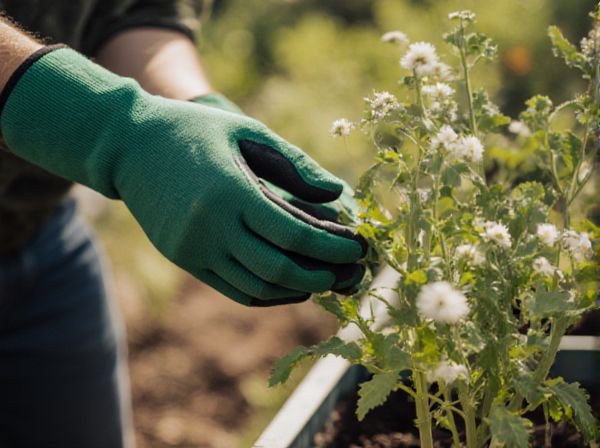
Selective harvesting vs strip harvesting Illustration
Selective harvesting targets specific trees based on criteria like size or species, promoting forest regeneration and biodiversity. Strip harvesting involves removing all trees in designated strips, which facilitates natural regrowth and eases replanting efforts. Both methods impact forest structure differently, with selective harvesting preserving ecosystem stability and strip harvesting enabling efficient timber extraction.
Table of Comparison
| Harvest Type | Selective Harvesting | Strip Harvesting |
|---|---|---|
| Definition | Removing specific, mature trees while preserving overall forest structure. | Clearing narrow strips of forest sequentially, promoting natural regeneration. |
| Impact on Ecosystem | Minimal disturbance, maintains biodiversity and soil stability. | Moderate disturbance, creates edge habitats, can affect wildlife movement. |
| Regeneration | Promotes uneven-aged forest growth and diversity. | Encourages natural regeneration in cleared strips, with even-aged stands. |
| Sustainability | Highly sustainable with careful planning and monitoring. | Moderately sustainable; requires time for full ecosystem recovery. |
| Economic Benefits | Higher value timber from select trees; lower immediate yield. | Faster timber yield; lower value due to mixed-age stands. |
| Best Use | Conservation-focused forestry and high-value wood production. | Large-scale timber production and site preparation for reforestation. |
Introduction to Harvesting Methods in Gardening
Selective harvesting targets only mature or ripe plants, preserving younger growth and promoting sustainable garden productivity. Strip harvesting involves removing entire rows or sections, enabling efficient mass collection but may temporarily reduce available crops. Understanding these methods helps gardeners balance crop yield with long-term soil health and plant regeneration.
Understanding Selective Harvesting
Selective harvesting prioritizes the removal of specific trees based on criteria such as age, size, or species health, preserving overall forest structure and biodiversity. This method reduces environmental impact by maintaining canopy cover and minimizing soil disturbance compared to strip harvesting, which clears large contiguous strips of vegetation. Understanding selective harvesting involves recognizing its role in sustainable forestry practices aimed at long-term ecological balance and resource regeneration.
Exploring Strip Harvesting
Strip harvesting involves removing narrow rows or strips of trees, preserving surrounding forest areas to maintain ecological balance and promote natural regeneration. This method enhances biodiversity by creating varied habitats and reduces soil erosion compared to clear-cutting, making it an environmentally sustainable alternative. Compared to selective harvesting, strip harvesting allows for efficient timber extraction while still supporting forest recovery and wildlife corridors.
Key Differences Between Selective and Strip Harvesting
Selective harvesting involves removing only mature or specific tree species, preserving overall forest structure and biodiversity, while strip harvesting clears entire rows or strips, creating open gaps for regeneration. This method impacts soil erosion and wildlife habitats differently: selective harvesting minimizes disturbance, whereas strip harvesting increases exposure and can accelerate regrowth in harvested strips. The choice between these techniques depends on forest management goals, ecological conditions, and species composition.
Advantages of Selective Harvesting
Selective harvesting promotes sustainable forest management by preserving biodiversity and maintaining ecosystem stability through the retention of mature trees and mixed-age stands. This method reduces soil erosion and minimizes habitat disruption compared to strip harvesting, which clears large contiguous areas. Selective harvesting supports continuous timber production while allowing natural regeneration and reducing the risk of disease spread.
Benefits of Strip Harvesting
Strip harvesting enhances forest regeneration by creating natural corridors that facilitate seed dispersal and sunlight penetration, promoting diverse plant growth. This method reduces soil erosion and maintains microhabitats essential for wildlife, boosting ecosystem resilience. By concentrating tree removal in narrow strips, strip harvesting allows for continuous forest cover, supporting sustainable timber production and long-term forest health.
Impact on Garden Sustainability
Selective harvesting promotes garden sustainability by preserving the majority of plants, allowing continuous growth and natural regeneration. Strip harvesting involves removing entire rows, which can lead to soil degradation and reduced biodiversity if repeated frequently. Maintaining soil health and plant variety through selective harvesting supports long-term productivity and ecosystem balance.
Crop Yield and Quality Comparison
Selective harvesting targets mature crops individually, preserving overall plant health and leading to higher-quality produce with consistent ripeness, which often results in improved crop yield quality. Strip harvesting removes entire sections at once, increasing short-term yield volume but may reduce quality due to mixed maturity levels and greater plant stress. Studies show selective harvesting optimizes both yield quality and sustainability, whereas strip harvesting prioritizes quantity over long-term crop vigor.
When to Choose Selective vs Strip Harvesting
Selective harvesting is ideal when the goal is to maintain forest biodiversity, promote regeneration of valuable tree species, and minimize ecological disturbance, especially in mixed-species or uneven-aged stands. Strip harvesting suits large-scale timber operations requiring efficient extraction while allowing some regrowth from unharvested strips, commonly used in even-aged plantations or where soil erosion control is critical. Choosing between these methods depends on forest management objectives, stand structure, and environmental considerations.
Best Practices for Efficient Harvesting
Selective harvesting targets mature trees individually, promoting sustainable forest growth and biodiversity preservation by minimizing ecosystem disruption. Strip harvesting involves removing all trees within specific strips, enabling faster regeneration but requiring careful planning to prevent soil erosion and habitat loss. Employing best practices such as precise mapping, species identification, and monitoring growth cycles ensures efficient harvesting while maintaining forest health.
Selective harvesting vs strip harvesting Infographic

 gardendif.com
gardendif.com